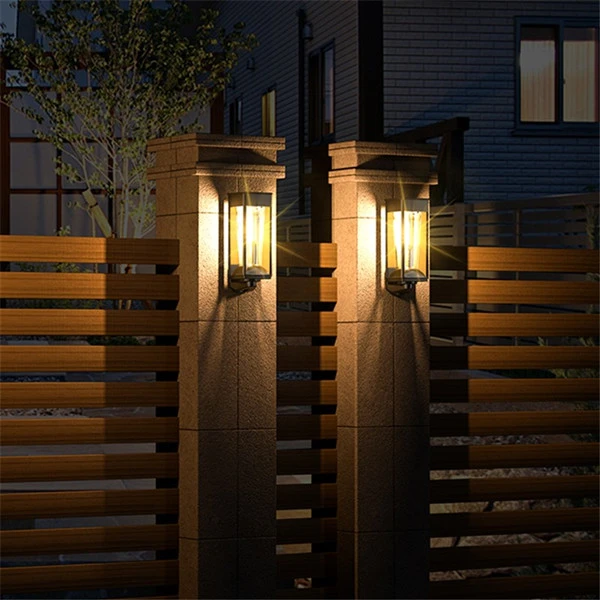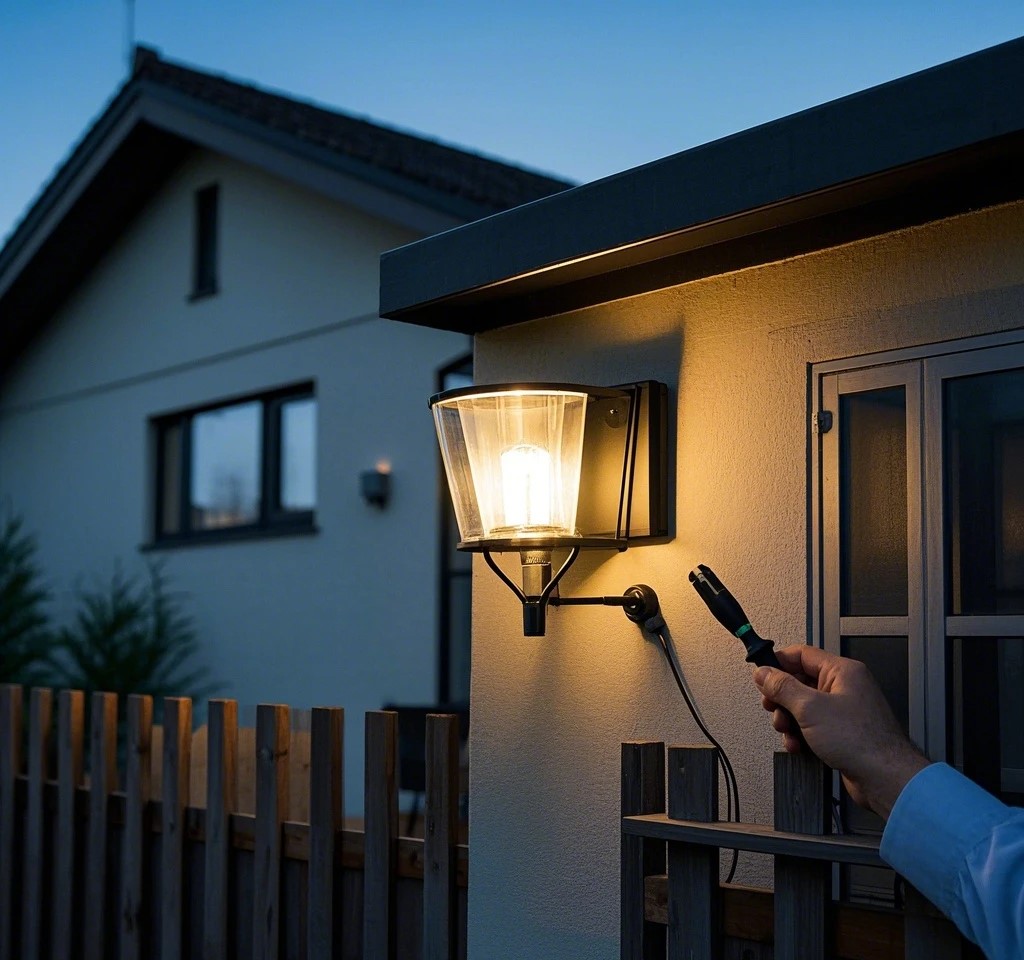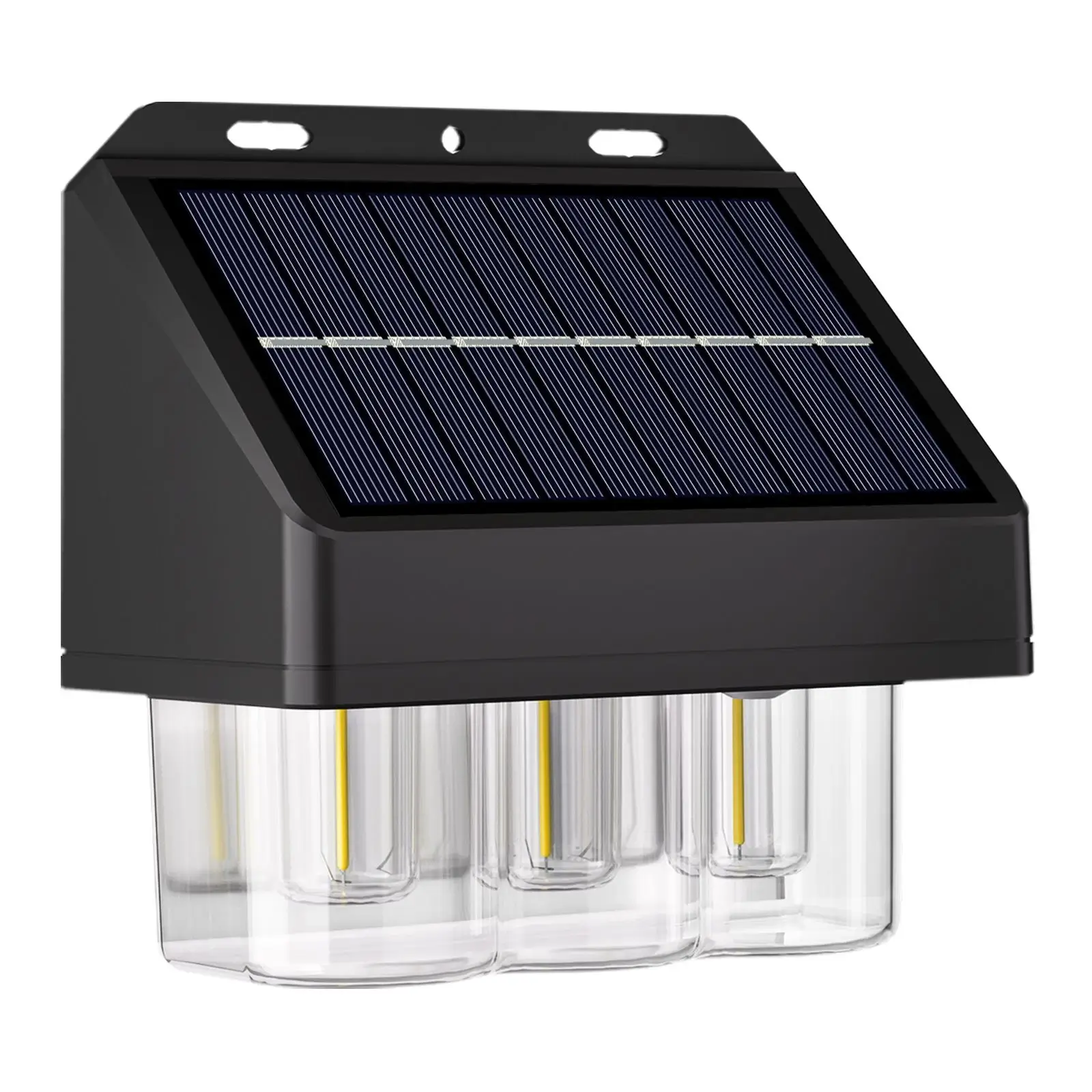As a homeowner dedicated to maintaining a beautiful and functional yard, ensuring your solar-powered lights perform consistently through every season is essential. Unlike temporary holiday decorations, solar lights are a long-term investment for daily use, enhancing both aesthetics and safety. This guide focuses on practical, season-specific maintenance tips for solar wall lights, fence lights, garden lights, and string lights, tailored to the needs of homeowners who value durability and efficiency. By following these strategies, you can keep your outdoor lighting in top shape, no matter the weather or season. Below, we outline actionable steps for each season and provide a maintenance schedule to align with varying U.S. climates.

Spring: Preparing Solar Lights for a Bright Season
Spring is the ideal time to refresh your solar lighting setup after winter’s harsh conditions. Proper preparation ensures your solar wall lights and fence lights shine brightly as days lengthen.
Cleaning for Optimal Performance
Winter often leaves dust, dirt, or snow residue on solar panels, reducing their ability to absorb sunlight. Use a soft cloth and mild soapy water to gently clean the panels on solar wall lights and fence lights. Avoid abrasive materials that could scratch the surface, as this impacts efficiency. For ground-mounted garden lights, check for mud or debris clogging the base and clear it away to ensure stability.
Inspecting Wiring and Batteries
Before reinstalling or adjusting lights, perform a lines check using a multimeter to measure battery health. This step is critical for solar wall lights and fence lights, which rely on consistent power. Connect the multimeter to the battery terminals to confirm voltage matches the manufacturer’s specifications (typically 1.2V for NiMH batteries). If the battery shows low output, replace it to avoid issues like dimming or failure to light. This proactive lines check prevents the frustration of installing lights that don’t work.
Positioning for Maximum Sunlight
Spring’s changing sun angles require repositioning garden lights to capture optimal sunlight. Ensure panels face south in the Northern Hemisphere and are free from shade caused by new foliage. For solar wall lights, verify that mounting brackets are secure after winter’s freeze-thaw cycles. A quick adjustment now saves energy and extends battery life through the season.
Summer: Protecting Solar Lights from Heat and Pests
Summer brings long days and intense sunlight, perfect for charging solar lights but also challenging due to heat and insects. Proper care keeps your garden lights and string lights functional and hassle-free.
Mosquito-Repellent Modifications
Warm evenings and garden lights can attract mosquitoes, creating a cleanup burden. To counter this, consider a mosquito-repellent modification. Apply adhesive mosquito-repellent patches around the lamp body, ensuring they don’t cover the solar panel or light output. These patches, often infused with natural repellents like citronella, deter insects without chemical sprays that could damage the light’s finish. For string lights draped over patios, place patches at intervals along the strand to create a pest-free zone.
Managing Heat Exposure
High temperatures can stress solar light components, especially batteries. For solar wall lights mounted on sun-facing surfaces, check that the lamp body isn’t overheating, as this can degrade battery life. If possible, add a small heat shield (like a thin metal plate) behind the light to deflect direct sunlight. For garden lights, ensure stakes are firmly planted to avoid tipping in summer storms, and consider elevating them slightly to improve air circulation around the base.
Regular Dusting
Summer dust and pollen can accumulate on solar panels, reducing efficiency. Wipe down fence lights and garden lights biweekly with a damp cloth to maintain clear panels. This simple step ensures maximum charging capacity during the long daylight hours.
Fall: Organizing Solar Lights for Easy Reuse
As days shorten and leaves fall, autumn is the time to prepare your solar lights for storage or reduced use. Proper organization, especially for string lights, saves time and prevents damage.
Segmented Storage for String Lights
String lights are prone to tangling, making spring setup a hassle. Adopt a segmented storage approach by cutting or organizing strands into 3-5 meter sections. Wrap each section around a sturdy cardboard tube or spool, securing the ends with twist ties. Label each tube with the installation location (e.g., “patio” or “tree line”) to streamline next year’s setup. This method prevents knots and protects the delicate wiring of string lights, ensuring they’re ready for use in spring.
Pre-Storage Cleaning
Before storing any lights, clean solar wall lights and garden lights to remove fall debris like leaves or sap. Use a soft brush to clear crevices and a damp cloth for panels. This prevents corrosion during storage and ensures lights are ready to reinstall.
Battery Maintenance
For lights left outdoors, check batteries in fence lights and garden lights. Fall’s cooler temperatures can slow battery performance, so use a multimeter for another lines check. Replace any underperforming batteries to avoid unexpected failures during occasional fall use.

Winter: Safeguarding Solar Lights from Cold
Winter’s freezing temperatures and snow can damage solar lights if not properly managed. Storing detachable components indoors is key to preventing cracks and extending lifespan.
Indoor Storage for Detachable Light Bodies
For garden lights with removable tops, practice indoor storage by detaching the lamp body and storing it in a dry, cool place like a garage storage rack. Leave the stake in the ground if it’s sturdy, or mark its location for easy reinstallation. For solar wall lights, remove the lamp head but keep the mounting base attached to avoid damaging wall fixtures. Store lamp heads in a labeled box to prevent misplacement. This protects plastic and metal components from ice and snow, which can cause cracks or corrosion.
Weatherproofing Fixed Lights
For fence lights or permanent solar wall lights, apply a weatherproof sealant around the edges of the solar panel and lamp body to prevent water seepage. Check that mounting screws are tight, as freeze-thaw cycles can loosen them. If heavy snow is expected, temporarily cover exposed panels with a breathable tarp to reduce ice buildup without blocking ventilation.
Battery Care in Cold Weather
Cold temperatures reduce battery efficiency, so perform a final lines check before winter sets in. If batteries are removable, store them indoors at room temperature to preserve their charge capacity. For non-removable batteries in fence lights, consider adding an insulating foam pad behind the light to reduce cold exposure.
Four-Season Maintenance Schedule
To keep your solar lights in top condition, follow this maintenance schedule tailored to U.S. climate zones. Adjust timing based on your region’s weather patterns.
| Season | Task | Timing | Notes |
|---|---|---|---|
| Spring | Clean panels, lines check with multimeter, reposition for sunlight | Early March (Northeast), February (South) | Prioritize after last frost to avoid re-freezing damage |
| Summer | Apply mosquito-repellent modification, dust panels, check stakes | June-July | Check after major storms for stability |
| Fall | Segmented storage for string lights, clean debris, battery check | Late September (North), October (South) | Store before first hard freeze |
| Winter | Indoor storage for detachable garden lights, seal fixed lights, battery check | November (North), December (South) | Monitor for heavy snow accumulation |
Regional Considerations
- Northeast/Midwest: Harsh winters require early indoor storage (October-November) and thorough spring cleaning due to heavy snow.
- South/Southwest: Mild winters allow some fence lights to stay in place, but summer heat demands frequent panel dusting and mosquito-repellent modification.
- Pacific Northwest: High humidity calls for extra sealant on solar wall lights and regular checks for moss buildup.
- Mountain West: Extreme temperature swings mean prioritizing battery checks in both spring and fall lines check routines.
Why Seasonal Maintenance Matters
Maintaining solar wall lights, fence lights, garden lights, and string lights year-round ensures they remain a reliable, cost-effective part of your yard. By addressing seasonal challenges—winter’s freeze, summer’s pests, fall’s debris, and spring’s reset—you extend the lifespan of your lights and reduce replacement costs. Each task, from mosquito-repellent modification to segmented storage, is designed to save time and effort while keeping your outdoor space inviting and safe.
Final Tips
- Invest in a quality multimeter for consistent lines check results.
- Keep a log of maintenance dates to track battery replacements and cleaning.
- Choose high-quality solar lights with replaceable batteries for easier upkeep.
By following this guide, you’ll enjoy a well-lit yard through every season, with minimal hassle and maximum efficiency. Bookmark this schedule and revisit it as seasons change to keep your solar lighting shining bright.


Leave a Reply